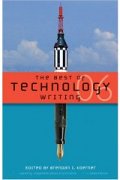Former Russian spy, defector, and activist-writer Alexander Litvinenko has died in a London hospital of suspected poisoning with radioactive thallium. [Subsequently, found to have been polonium]
Litvinenko’s friend Alexander Goldfarb read a statement prepared by the former spy on his deathbed just two days before he passed away. In that statement, Litvinenko lays the blame for his poisoning firmly at the feet of Russian President Vladimir Putin and says: “You may succeed in silencing me, but that silence comes at a price,” according to news reports, “You have shown yourself to be as barbaric and ruthless as your most hostile critics claim.
The Russian government has declared the claims as preposterous and suggests that infighting among Russians living in London is more likely to have led to Litvinenko’s death.
Preliminary post-mortem results suggest that a radioactive material – possibly a large dose of radioactive polonium-210 – may have been associated with his death. In our earlier report, it was suggested that thallium, then radioactive thallium, may have been implicated. Whether or not Litvinenko ingested this material was exposed to it in the environment is not yet known raising serious public safety concerns.
A UK press conference held this afternoon provided more information.
 Ever wanted to observe the dissection of fruitfly ovaries but were too squeamish? What about monitoring actin disassembly with time-lapse microscopy, not sure how it’s done? Maybe you have been wondering how to freeze human embryonic stem cells but were afraid to ask…
Ever wanted to observe the dissection of fruitfly ovaries but were too squeamish? What about monitoring actin disassembly with time-lapse microscopy, not sure how it’s done? Maybe you have been wondering how to freeze human embryonic stem cells but were afraid to ask… What alchemist’s den would be complete without a crucible? The tough little vessels used for mixing all those odd ingredients, goat urine, cow’s blood, sweat, philosopher’s wool, saltpeter etc etc…
What alchemist’s den would be complete without a crucible? The tough little vessels used for mixing all those odd ingredients, goat urine, cow’s blood, sweat, philosopher’s wool, saltpeter etc etc… Fancy a whirlwind tour of some of the best technology writing of the year? As part of the digitalculturebooks series from the University of Michigan Press, Brendan Koerner has compiled some of the most stimulating and fascinating feature articles from the web and print media by the likes of the NYT’s David Bernstein, New Republic’s David Bell, Mike Daisy on Slate, Dan Ferber in Popular Science magazine, and many more.
Fancy a whirlwind tour of some of the best technology writing of the year? As part of the digitalculturebooks series from the University of Michigan Press, Brendan Koerner has compiled some of the most stimulating and fascinating feature articles from the web and print media by the likes of the NYT’s David Bernstein, New Republic’s David Bell, Mike Daisy on Slate, Dan Ferber in Popular Science magazine, and many more. A former colonel in the FSB (the successor to the KGB) has allegedly fallen foul of chemistry. Alexander Litvinenko, 43, a vocal critic of Russian President
A former colonel in the FSB (the successor to the KGB) has allegedly fallen foul of chemistry. Alexander Litvinenko, 43, a vocal critic of Russian President  Canadian and Korean chemists have locked in a form of handedness into a common catalytic molecule that could make it useful for separating the building blocks of proteins, amino acids, into their chiral forms for biotech applications and drug development. The new locked up cat, might also be used to make purer and safer chemical starting materials for reactions in the drug, agrochemicals, and polymer industries.
Canadian and Korean chemists have locked in a form of handedness into a common catalytic molecule that could make it useful for separating the building blocks of proteins, amino acids, into their chiral forms for biotech applications and drug development. The new locked up cat, might also be used to make purer and safer chemical starting materials for reactions in the drug, agrochemicals, and polymer industries. New, healthier alternatives to processed food starches with a lower GI, or glycaemic index, may soon be on the menu, thanks to scientists in China and the US. The researcher have begun to unlock the secrets of starches that make dehusked grains, potatoes, and processed foods such as biscuits and breakfast cereals less healthy compared with low GI foods. Their statistical analysis of starchy data could lead to new processed carbohydrates that do not cause the worrying blood sugar spikes associated with conventional processed starch.
New, healthier alternatives to processed food starches with a lower GI, or glycaemic index, may soon be on the menu, thanks to scientists in China and the US. The researcher have begun to unlock the secrets of starches that make dehusked grains, potatoes, and processed foods such as biscuits and breakfast cereals less healthy compared with low GI foods. Their statistical analysis of starchy data could lead to new processed carbohydrates that do not cause the worrying blood sugar spikes associated with conventional processed starch. Arterial plaques represent a "death zone" within the artery in which white blood cells that would otherwise clear away such fatty deposits are killed before they can do their job.
Arterial plaques represent a "death zone" within the artery in which white blood cells that would otherwise clear away such fatty deposits are killed before they can do their job.